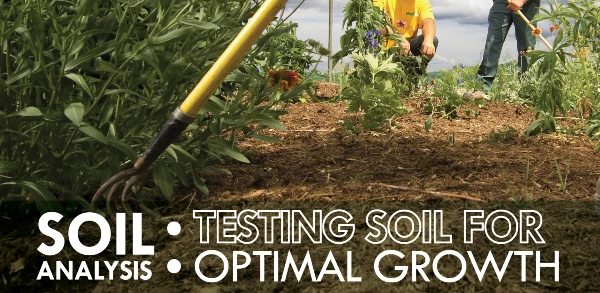
The Grounds Guys explain how soil analysis boosts plant growth.
|
Just like vitamins and other supplements can help keep you in optimal health, they also benefit your lawn and garden. But you wouldn't take nutrients that you don't need; you'd have the doctor run tests to determine exactly what was best for you. With that example in mind, think of The Grounds Guys® as your on-call "green doctor." We can help with garden and lawn tips that are based on soil testing results.
Because the soils in different yards can vary widely in their nutrient composition, broadcasting fertilizers randomly can actually do more harm than good. If you use too much fertilizer — fertilizer that your lawn doesn't need -- you can burn your grass. Some people think that the more nitrogen the better to green up a lawn. But excessive nitrogen, a primary ingredient in lawn fertilizers, can actually promote a disease called "brown patch," which causes symptoms as its name describes.
Soil Analysis
There are 18 essential nutrients necessary for healthy plant growth. Three of these — oxygen, hydrogen and carbon — are supplied by the air. But a plant has to receive the other 15 nutrients from the soil. This is one of the primary functions of plant roots — absorbing the essential elements a plant needs. High on The Grounds Guys' list of lawn tips is soil analysis. A soil test determines the levels of nutrients in the soil, and lets you know whether there are deficiencies or excesses. An effective soil test also gives recommendations for what kind of fertilizer (and how much) you need to apply to your lawn or garden to correct any deficiencies.
Primary Plant Nutrients
The Big Three — Nitrogen, Phosphorus and Potassium — are the nutrients that plants need in greater quantities than other elements, called macronutrients. These are represented by the three numbers on a bag of fertilizer, such as 10-10-10. But fertilizer blends can also include micronutrients that are important for healthy plants, but which are needed only in trace amounts.
The Problem of pH
Even if you apply fertilizer exactly according to soil-test recommendations, your lawn and plants may not be able to absorb it from the soil. The secret key to unlock the availability of these nutrients is an all-important measurement — the pH of the soil. In a nutshell, pH is a measurement of whether a soil leans toward being acidic or basic. And if the pH is not properly balanced, it prevents plant roots from being able to uptake nutrients, even if they're present in the soil. The Grounds Guys can help with lawn tips that help you choose a suitable turfgrass type for your growing zone as well as your soil type.
Lawn Tips for Soil Analysis
- Have a soil test done the season prior to planting or growing. For example, if you have a warm-season turfgrass type, have the soil tested in the fall or winter. This allows time for fertilizer to be applied to your lawn or garden and to incorporate fully in the soil for optimal plant growth.
- If nutrient ranges are within, or fairly close to, normal ranges, test your soil only every two or three years. But if some nutrients are excessively high or low, have a soil analysis every year until the results are consistently within acceptable levels.
- Set your fertilizer spread settings accurately for maximum coverage without burning plants.
Call on The Grounds Guys for all your soil testing and fertilizing questions. The plant doctor is "in" to help you with garden and lawn tips that'll keep your landscape in the peak of health.